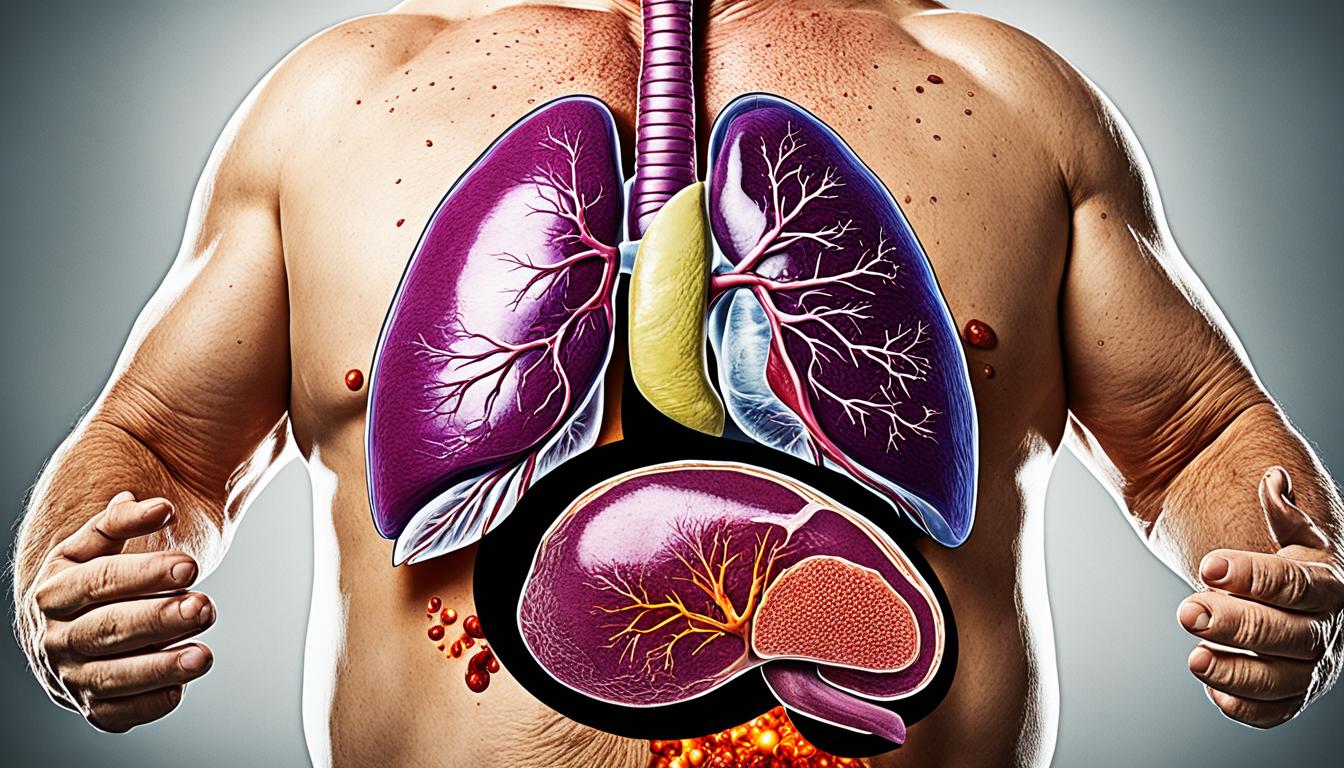Nonalcoholic fatty liver disease (NAFLD) is a common liver issue worldwide. Recent studies show a growing number of cases. About 25% of the world’s people face this illness, with higher numbers in Western nations.
Key Takeaways:
- NAFLD is a common liver condition that is affecting people globally.
- The incidence and prevalence of NAFLD have been increasing.
- Approximately 25% of the global population has NAFLD.
- Western countries have the highest prevalence of NAFLD.
Epidemiology of NAFLD and Risk Factors
Nonalcoholic fatty liver disease (NAFLD) is becoming a big health issue around the world. Many studies show how it spreads and what makes it happen.
Recent research says more people have NAFLD now than in the past. In the U.S., about 30% of adults have it. This means it’s affecting a lot of people.
In places like the U.S. and Europe, where people move less and eat poorly, NAFLD is common. But it’s also growing in countries that are getting used to new ways of eating and living.
Many things can make you more likely to get NAFLD. Here are some:
- Too much weight and fat around your middle (obesity).
- Having type 2 diabetes makes it more likely.
- When your body doesn’t use insulin well (insulin resistance).
- Bad lipid levels, including high triglycerides and low HDL (“good”) cholesterol.
- Not moving enough (a sedentary lifestyle).
These factors mix together to cause NAFLD. Knowing about them helps us stop NAFLD from happening.
Below is a table to show how common NAFLD is around the world:
| Region | Prevalence of NAFLD |
|---|---|
| United States | 30% |
| Latin America | 25% |
| Europe | 20% |
| Asia | 15% |
| Africa | 10% |
Diagnosis and Management of NAFLD
Diagnosing NAFLD requires checking your medical history, a physical exam, and some tests. Liver function tests show how well your liver is working. They can also indicate if there’s any damage or inflammation.
These tests look at certain enzymes and proteins in your blood. High levels of ALT and AST might mean your liver is hurting. This suggests you could have NAFLD (Teng et al., 2023).
Doctors also use imaging tests to diagnose and check NAFLD. Ultrasounds and MRIs are common. They help see how much fat is in your liver and how bad the disease is. By looking inside the liver, doctors can tell if it’s in a more serious stage (Le et al., 2022).
Sometimes, a liver biopsy is needed. It’s a small tissue sample taken from your liver. Doctors look at this sample under a microscope to confirm NAFLD. This helps them plan the right way to treat it (Alexander et al., 2018).
Lifestyle Modifications for NAFLD
After an NAFLD diagnosis, lifestyle changes are crucial. They focus on making your liver healthier and stopping the disease from getting worse. Here are some key changes to make:
- Adopting a healthy diet: Eat lots of fruits, veggies, whole grains, and lean proteins. This can lower liver fat and boost your health.
- Getting regular exercise: Physical activity helps you lose weight and improves how your body uses insulin. This can also lower how much fat is in your liver.
- Cutting out alcohol: Alcohol can harm your liver even more. Stopping or cutting down on drinking is vital for liver health.
- Managing health issues: Work with your doctor to handle problems like obesity, diabetes, and high cholesterol. Treating these can help your liver too.
- Watching your medications: Some drugs can affect your liver. Always talk to your doctor before taking new medications if you have NAFLD.
These changes, when combined with keeping an eye on your health issues, can really turn around your liver’s health. They lower the risk of your NAFLD getting worse.
Conclusion
Nonalcoholic fatty liver disease, or NAFLD, is a common liver issue. It connects closely with obesity, diabetes, and metabolic problems. The global rise in NAFLD cases poses a big health challenge.
NAFLD often shows no symptoms at first. Early spotting and treatment are key to avoid its advance. Without intervention, it can lead to serious issues like NASH, liver fibrosis, or cirrhosis.
Diet and exercise are important in NAFLD care. But, there’s new hope in stem cell therapy. This therapy aims to help the liver heal and fight inflammation. It offers a brighter future for patients.

